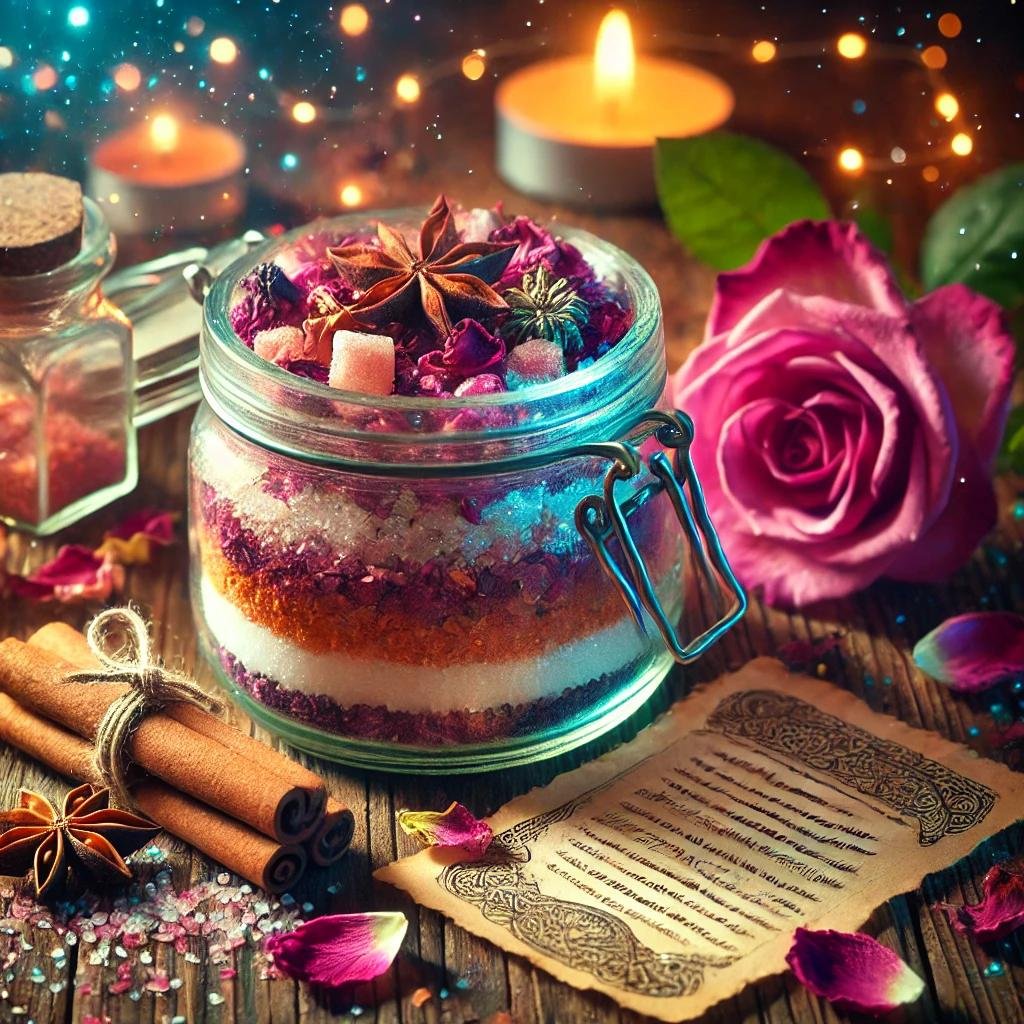Basking in the Sun: Celebrating Litha, the Summer Solstice
Today, we’re diving into the warmth of Litha, the Summer Solstice, a time when the sun is at its peak, and the Earth is lush with life. Celebrated around June 21st, Litha marks the longest day of the year, a moment filled with light, magic, and the fullness of nature.
Wheel of the Year
Welcome to our journey through the Wheel of the Year, a beautiful and cyclical guide to the seasonal festivals celebrated by many Wiccans, Pagans, and various nature-based spiritual paths. This wheel symbolizes the annual cycle of seasonal festivals, marking the natural rhythms of the Earth and the ebb and flow of life.
The Wheel of the Year consists of eight Sabbats, each celebrating a different aspect of the Earth’s journey around the sun. These festivals include four solar events — the solstices and equinoxes — and four seasonal festivals traditionally tied to agricultural cycles.
1. Samhain (October 31st-November 1st): Marking the end of the harvest and the beginning of winter, Samhain is a time of reflection, honoring ancestors, and the thinning veil between worlds.
2. Yule (Winter Solstice, around December 21st): Celebrating the rebirth of the sun, Yule is a festival of light, joy, and the promise of the returning warmth.
3. Imbolc (February 1st): A festival of purification and the first stirrings of spring, Imbolc is a time for setting intentions for the upcoming year.
4. Ostara (Spring Equinox, around March 20th): Marking the balance of day and night, Ostara celebrates new beginnings, fertility, and the vibrant awakening of the earth.
5. Beltane (May 1st): A joyful festival celebrating fertility, fire, and abundance, Beltane is a time of passion and growth.
6. Litha (Summer Solstice, around June 21st): The peak of summer, Litha is a celebration of light, power, and the fullness of life.
7. Lammas or Lughnasadh (August 1st): The first harvest festival, Lammas is a time to give thanks for abundance and to reap what has been sown.
8. Mabon (Autumn Equinox, around September 22nd): A time of balance and reflection, Mabon celebrates the second harvest and the winding down of the year.
Each Sabbat reflects a unique aspect of the Earth’s natural cycle and offers a moment to pause, reflect, and celebrate the ever-changing beauty of nature. As we journey through the Wheel of the Year, we connect with these natural rhythms and honor the legacy of our ancestors who lived by these seasonal cycles.
Litha: A Historical Perspective
Litha, also known as Midsummer, has been celebrated for centuries across various cultures. In ancient times, it was a festival of fire, love, and the triumph of light. The Celts celebrated with bonfires to honor the sun, while in Norse culture, it was a time for gatherings and feasts.
The name ‘Litha’ is believed to have Anglo-Saxon origins, and the festival itself is deeply rooted in pagan traditions that celebrate the power and majesty of the sun at its strongest.
Deities of Light and Life
Litha is a time to honor deities associated with the sun, fertility, and the Earth:
1. The Sun God: In various pagan traditions, the Sun God is celebrated in his most potent form. He is the embodiment of strength, vitality, and the life-giving energy of the sun.
2. Freya: The Norse goddess of love, fertility, and beauty, Freya’s energy aligns beautifully with the themes of Litha.
3. Aine: An Irish goddess associated with summer, wealth, and sovereignty, Aine’s connection to the sun and the land makes her a fitting deity to honor during Litha.
Rituals and Celebrations for Litha
Litha is a time of joy, abundance, and outdoor celebrations. Here are some ways to embrace the energy of the Summer Solstice:
1. Celebrate Outdoors: Spend as much time as possible outside. Have a picnic, go for a hike, or simply bask in the sunlight.
2. Create a Sun Altar: Decorate an altar with symbols of the sun, such as gold, yellow flowers, and sun imagery. Add crystals like citrine and amber to capture the essence of the sun’s energy.
3. Light a Bonfire: If possible, celebrate with a traditional bonfire, a powerful symbol of the sun’s energy. Dance, jump over the fire for luck, or simply enjoy its warmth as the evening sets in.
4. Sun Water: Place water in a bowl under the sun to create sun water, which you can use for blessings, in rituals, or as an offering.
5. Herbal Magic: Work with herbs like St. John’s Wort, lavender, and chamomile, which are traditionally associated with Litha.
Litha Correspondences
To enhance your Litha celebration, here are some correspondences associated with this Sabbat:
• Colors: Gold, green, blue.
• Foods: Fresh fruits, especially citrus, honey, mead, summer vegetables.
• Herbs and Flowers: Lavender, mugwort, chamomile, rose, daisy.
• Crystals: Citrine, tiger’s eye, amber.
• Incense and Oils: Frankincense, lemon, sandalwood.
Living the Litha Way
Litha is a reminder to enjoy the bounty and beauty of life. It’s a perfect time to focus on personal empowerment, growth, and the joys of the natural world. Whether you’re practicing yoga under the sun, crafting herbal remedies, or simply sharing laughter with friends, let the energy of Litha infuse your life with warmth and light.
So, let’s raise our faces to the sun and soak up its magnificent rays. May your Litha be filled with joy, abundance, and the magic of the longest day.






